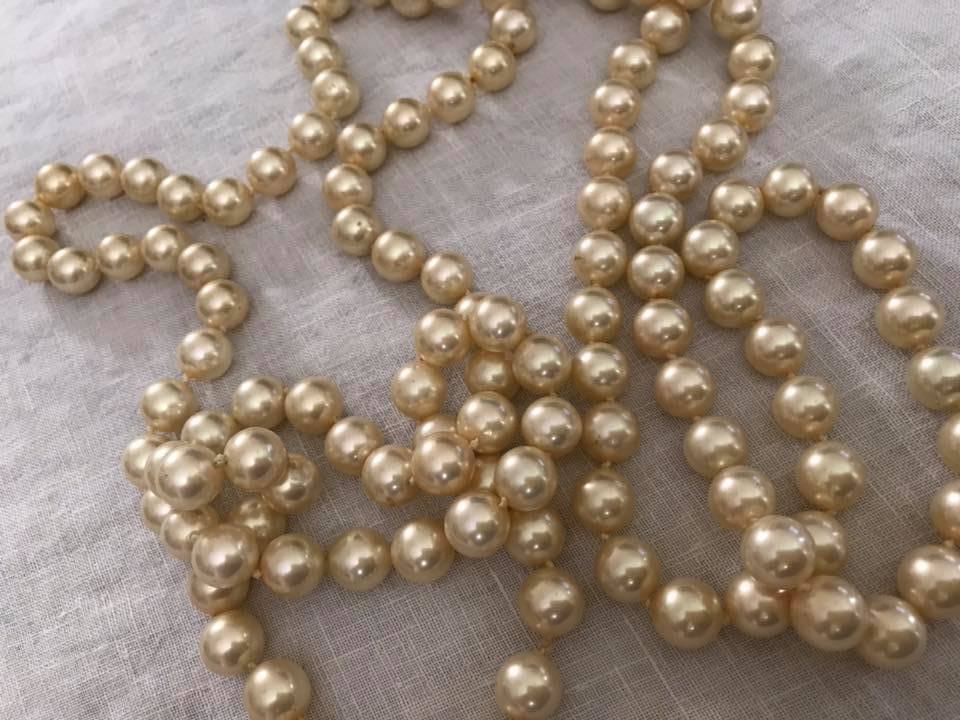Maybe Grandma can Keep her Vintage Faux Pearls?: 295,900 ppm Lead (90 & up is unsafe in items kids use)
For those new to this website:
Tamara Rubin is a multiple-federal-award-winning independent advocate for childhood Lead poisoning prevention and consumer goods safety, and a documentary filmmaker. She is also a mother of Lead-poisoned children (two of her sons were acutely Lead-poisoned in 2005). Since 2009, Tamara has been using XRF technology (a scientific method used by the U.S. Consumer Product Safety Commission) to test consumer goods for toxicants (specifically heavy metals — including Lead, Cadmium, Mercury, Antimony, and Arsenic). Tamara’s work was featured in Consumer Reports Magazine in February of 2023 (March 2023 print edition).
How toxic are your vintage pearls?
When tested with an XRF instrument, this set of Grandma’s vintage faux pearls (that feel like real pearls!) were positive for Lead at 295,900 +/- 34,000 ppm. At this level of Lead, these pearls are essentially made of Leaded crystal.
The Lead is what gives them their weight and makes them feel real. If your vintage faux pearls are heavy they are very likely Leaded, although the lighter plastic ones (ones that feel more like Mardi Gras beads) can also have unsafe levels of Lead in the paint or coating. (Here’s a link to an example of that.)
How much Lead is too much Lead? Why are these unsafe?
For context, the amount of Lead that is considered toxic in a newly manufactured item intended for use by children is anything 90 ppm Lead or higher in the paint or coating and anything 100 ppm Lead or higher in the substrate. Vintage pearls like this can have high Lead in both the substrate AND the coating.
As a result of the presence of Lead in the coating, these types of faux pearls also often test positive when tested with a reactive agent test — like a LeadCheck swab, indicating they have the potential to be especially dangerous — especially for use by young children. (Here’s my Amazon affiliate link for LeadCheck swabs too! http://amzn.to/2tpGNzO). This is one of those consumer goods that is worth testing with a home kit if you do have concerns.
What should I do with my (likely Leaded) vintage faux pearls?
I would definitely avoid passing these on to your children or grandchildren to play with, because if a child puts them in their mouth (as children often do with beads and jewelry) they could present a very real Lead poisoning risk. Here’s an article I wrote about the conundrum of disposing of (or passing along) potentially Leaded items.
Here are more articles with vintage faux pearls I have tested.
As always, please let me know if you have any questions! Thank you for reading and for sharing these articles.
Sincerely,
Tamara Rubin
#LeadSafeMama
*Amazon links are affiliate links. If you purchase something after clicking on one of my links I may receive a small percentage of what you spend at no extra cost to you. Thank you.

Never Miss an Important Article Again!
Join our Email List









Hi Tamara, I was wondering if you’ve tested Majorica or Majorca pearls at all? My understanding is that those are considered to be the highest quality faux pearls, but wasn’t sure if they’re still testing positive. Thank you!
If they are faux pearls they are likely high-Lead. I don’t know that I have tested them specifically.
Home Comfort Wrought Iron wood cook stove. Still got original paint all over it, was wondering how safe it is since i still use it for heat and cooking?